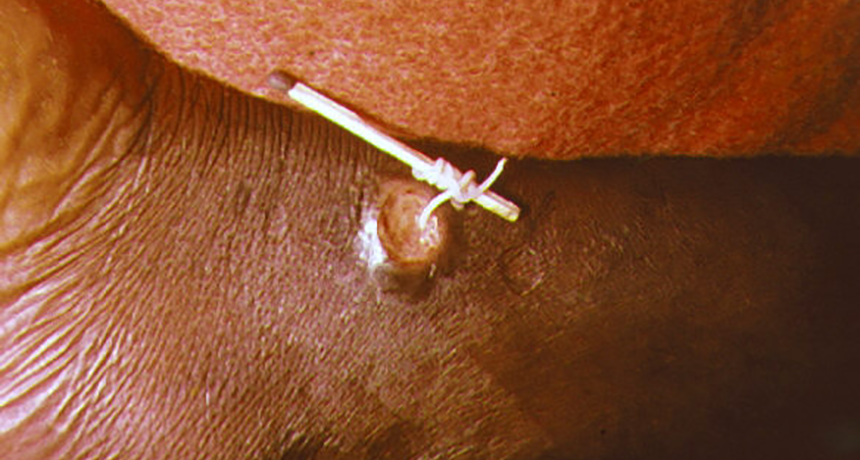dracunculiasis Also known as guinea worm disease, it is caused by Dracunculus medinensis , a species of nematode, or roundworm. The worms can enter someone’s body from drinking water tainted with tiny fleas that carry the parasite. The guinea worm then lives and mates inside the human body. After about a year, its victim will get a burning feeling in a leg or foot as the female worm, which had migrated there, forms a blister in the skin. If the patient puts that leg or foot into water to relieve the burning feeling, the female worm may releases her eggs into the water, starting the life cycle over again.
eradicate To deliberately eliminate or wipe out, such as a population of vermin (rats or cockroaches, for instance) inhabiting a particular site.
egg The unfertilized reproductive cell made by females.
Guinea worm ( Dracunculus medinensis ) This species of microscopic nematode, or roundworm, causes dracunculiasis, also known as guinea worm disease.
host (in biology and medicine) The organism (or environment) in which some other thing resides. Humans may be a temporary host for food-poisoning germs or other infective agents.
infection A disease that can spread from one organism to another. It’s usually caused by some type of germ.
larva (plural: larvae) An immature life stage of an insect, which often has a distinctly different form as an adult. (Sometimes used to describe such a stage in the development of fish, frogs and other animals.)
muscle A type of tissue used to produce movement by contracting its cells, known as muscle fibers. Muscle is rich in protein, which is why predatory species seek prey containing lots of this tissue.
parasite An organism that gets benefits from another species, called a host, but doesn’t provide that host any benefits. Classic examples of parasites include ticks, fleas and tapeworms.








